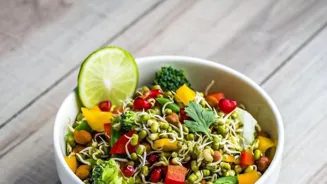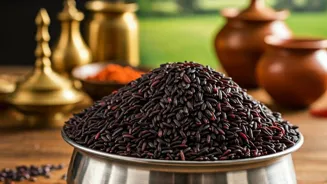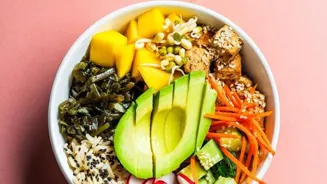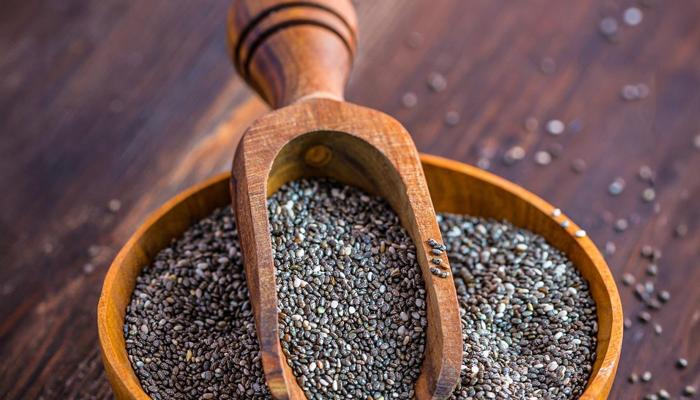Unveiling Glycemic Index: Key to Smart Eating Habits. Dive in to unlock its power!
In today's world, where everyone is becoming more health-conscious, understanding the glycemic index (GI) can be a game-changer
for managing your diet and overall wellbeing. The Glycemic Index (GI) is simply a measure of measuring how quickly a food can raise your blood sugar levels.
It is a number assigned to food, ranging between 0 to 100, with pure Glucose having a GI of 100. Think of it as a roadmap showing you how different foods affect your blood sugar levels. Paying attention to the GI of foods can help you make informed food decisions.
Especially if you have diabetes or wants to maintain stable energy levels throughout the day. Let us find out some interesting tips about the Glycemic Index.
GI scale categorizes foods as low, medium, or high based on glucose impact
The GI scale classifies foods into three main categories: low, medium, and high. Low-GI foods have a rating of 55 or less, medium-GI foods fall between 56 and 69, and high-GI foods have a rating of 70 or more.
Low GI foods release glucose slowly and steadily which helps in keeping a balanced blood sugar level. These slowly absorbed carbohydrates will provide sustained energy, making you feel fuller for longer. High GI foods on the other hand, causes the blood sugar to spike quickly.
This spike is often followed by a crash which leads to cravings and fatigue. For example, white bread has a high GI value, while whole grain bread has a low GI value.
Managing blood sugar with low GI foods promotes overall health
Managing blood sugar is important for everyone, not just those with diabetes. When your blood sugar levels are stable, you experience consistent energy levels, and you will be less prone to sugar cravings or sudden slumps.
Consistently consuming high GI foods can lead to weight gain, insulin resistance, and an increased risk of developing type 2 diabetes. By choosing low GI foods, you can prevent these drastic spikes and promote better overall health in the long run.
Think of the GI as a tool to help you make choices that benefit your long-term well-being.
Food GI varies based on ripeness, processing, cooking, and combos, affecting blood sugar
The GI value of a food is not set in stone, as several factors can influence it. These include the ripeness of the food, the processing methods used, and even how it is cooked. For instance, overripe fruits tend to have a higher GI than unripe ones because their starches have converted into sugars.
The more a food is processed, the higher its GI is likely to be. Cooking methods also play a role; boiling vegetables can lower their GI compared to baking or frying. Even combining foods can change the overall GI.
Eating high GI foods with protein or fat slows down the absorption of glucose, therefore lowering the overall GI effect on the blood sugar levels.
Various low-GI foods promote stable blood sugar levels
Numerous delicious and nutritious foods falls under the low-GI category. Most non-starchy vegetables like leafy greens, broccoli, and cauliflower are low-GI choices. This also includes fruits like berries, apples, and citrus fruits.
Legumes such as lentils, chickpeas, and kidney beans are also excellent low-GI option as they are high in fibre. Whole grains like oats, quinoa, and brown rice are much better than refined grains like white bread and white rice.
Incorporating these foods into daily diet can help maintain stable blood sugar levels and provide sustained energy. Enjoying a bowl of oatmeal with berries for breakfast or opting for a salad with mixed greens and chickpeas for lunch are good choices.
Consume high-GI foods in moderation for stable blood sugar
While no food is off-limits, it is best to consume high-GI foods in moderation. These foods cause rapid blood sugar spikes and crashes. Common examples include white bread, white rice, potatoes, and sugary drinks like soda and juice.
Many processed snacks, such as biscuits, cookies, and candies, also fall into this category. It is important to be mindful of portion sizes when consuming high-GI foods. Combining them strategically with low-GI foods can also help to lessen their effect on your blood sugar levels.
Small changes can make a big difference in managing overall health.
Incorporate low-GI habits by choosing whole foods and pairing carbs with protein and fats
Incorporating low-GI eating habits is simpler than you think. Start by swapping out refined grains for whole grains whenever possible. Choose whole wheat bread over white bread, brown rice over white rice, and whole-wheat pasta over regular pasta.
Include plenty of non-starchy vegetables and legumes in your daily meals. For fruits, opt for fresh, whole options over processed juices. When preparing meals, consider boiling or steaming food rather than frying or baking.
Also, try to pair carbohydrates with protein and healthy fats to slow down glucose absorption. Plan your meals with a combination of these strategies will ease up the transition to a healthier lifestyle.
AI Generated Content. Glance/InMobi shall have no liability for the content










